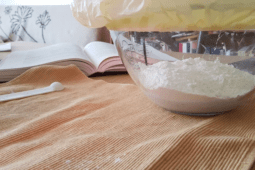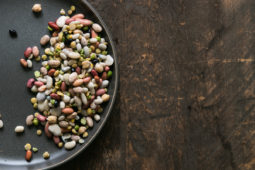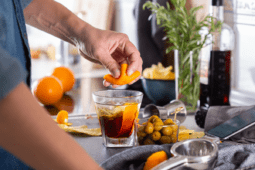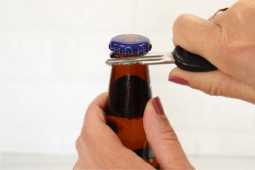How to: Make Kimchi – An Easy, At Home Recipe

Over the last few years, I’ve become fascinated with fermentation. I love the idea that you can purposefully use little microbes to make food taste awesome, and that many foodstuffs are actually only possible by can actually encouraging bacteria and yeasts to grow in your food.
Nothing represents naturally fermented foods like kimchi, the family of fermented vegetable pickles from Korea. The most familiar is napa cabbage kimchi, or baechu, which is quite easy to make at home using mostly supermarket ingredients and a few Asian specialities. It’s loads of fun, requires no canning equipment or special yeasts, and can be made easily in your home kitchen. If you’ve got a batch of kimchi in the fridge, you’ve got dinner.
Wanna make some? Let’s!
Ingredients
- One large napa cabbage, quartered lengthwise
- Kosher salt, about 1 cup
- 1 cup Korean chile powder, called gochugaru, which has a course texture and is often translated as “red pepper powder.” (Sometimes transliterated as kochukaru)
- 6-8 cloves garlic, crushed
- 1/2 small yellow onion
- 6 scallions, roots removed and sliced into 2 inch pieces
- 1.5 inches piece fresh ginger, peeled
- 1/4 Asian or nashi pear
- 1 medium daikon radish, peeled and sliced into 1/4-inch pieces
- Two carrots, julienned
- 1 teaspoon sugar, dissolved in 1/4 cup fish sauce (or soy sauce if vegetarian)
1. Take the cut cabbage and flick lots of salt between the layers. Place in a colander, and let sit for four hours, or until cabbage is floppy.
2. Meanwhile, place the garlic, yellow onion, ginger, pear, and daikon in a food processor and puree. Move to a bowl, then stir in chile powder and the fish sauce/sugar mixture.
3. Then, just spread the chile mixture in between the leaves of the cabbage, covering the front and back of each leaf. Place in an airtight jar (Koreans have special pickling jars for this…you can find them at some Asian markets), and let sit in room temperature for two to three days. Then, store in fridge, tasting every few days to note how it continues to change. I love it when it bubbles on my tongue, like salty, pickled Pop Rocks.
4. Use on everything.









